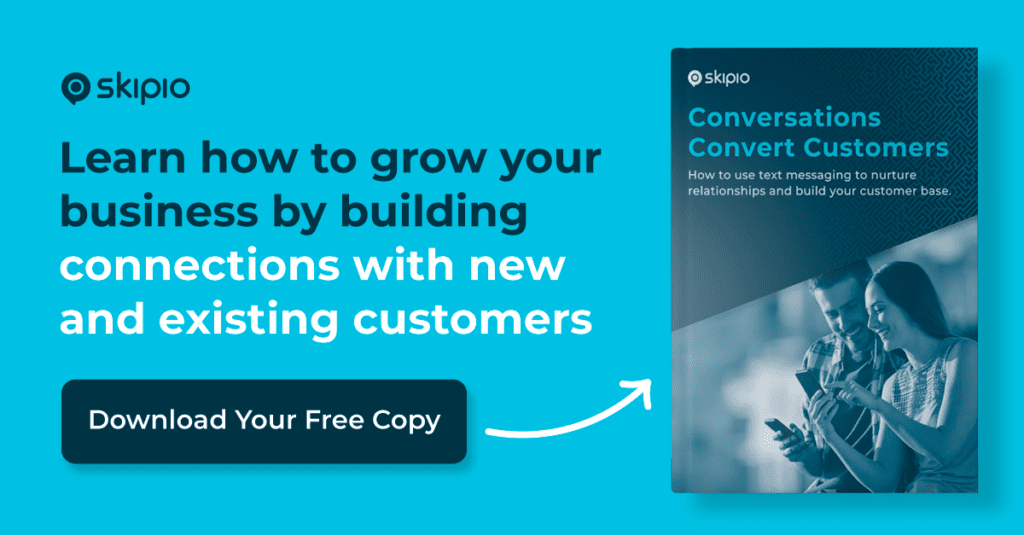
I’ve been involved in marketing roles for almost 7 years now. But on a weekly basis I look up terms that I see on LinkedIn, in newsletters, and around websites.
Marketers and sales professionals sure love their acronyms, abbreviations, and slang terms. In the words of Kevin Malone, “Why waste time say lot word when few word do trick.”
So whatever justification you like to use for your marketing and sales slang, here are a handful of terms you’ll find useful throughout the rest of 2024.
By no means a comprehensive list — because I do actually have responsibilities other than researching sales/marketing slang — I did try to include both classic marketing and sales slang along with contemporary terms growing in popularity.
Account-Based Marketing/Account-Based Selling
Written as ABM and ABS; “a clearly targeted effort by all teams to find and sell to the ‘perfect fit’ customer from the very start;” strategies that blur the lines between what counts as marketing and what counts as selling; often adopted by teams that operate smarketing teams
ARPU
Average revenue per user, measured over set periods of time; a metric more useful in determining the actual monetary value of a customer compared to the LTV:CAC ratio
BOFU
Acronym that stands for Bottom of Funnel, relating to the late stages of a buyer’s journey; the time when you close deals or convert prospects into customers
Broetry
A specific type of LinkedIn post marked by its formatting, cliches, generalizations, and pseudo-inspirational feel; the professional equivalent of saying a lot but still somehow saying nothing; term coined by Lorcan Roche Kelly
CAC
Not to be confused with Gak, CAC is the acronym for Customer Acquisition Cost; the amount of money you must spend (basically your marketing expenses) to acquire one paying customer
Churn
The process of mixing sugar and cream into the ice cream that you will inevitably want to eat after a long day of watching clients cancel and leave; term commonly associated with SaaS companies and the loss of recurring revenue in the sales cycle
Cold Calling/Emailing/Texting
Contacting someone you haven’t explicitly received permission to contact; they’re not expecting your phone call, email, or text message and may or may not get ticked off that you contacted them; minimize anger and do not cold text people
Conversational Text Messaging
Also referred to as conversational texting and conversational messaging; specifically refers to communicating with prospects and customers through texting in a completely personal way; can still be run with automations and scheduling features; can also be referred to simply as Skipio
Conversion
When someone takes the action you want them to take; includes purchasing, scheduling, showing up, clicking a link, filling out a form (Did anyone else think conversion was just another word for buying when they first started in marketing or was that only me?)
Customer Journey, Lifecycle, or Pathway
The stages people go through as they learn about products or services, buy, and stay a customer; every person seems to have their own favorite metaphor for these stages and some even call it the market funnel
Dark Social
The social commentary and interactions that businesses can’t easily see, track, or attribute even though all of it can directly contribute to traffic, visitors, and customers — includes the conversations that take place on podcasts, DMs on social platforms, chatting in Slack groups, conversations on forums, etc.; the stuff that attribution software will almost assuredly misattribute to the wrong channels
Demo-scovery
The best possible solution when someone wants to jump right to a demo and you don’t know anything about their specific needs; running a demo while simultaneously doing discovery for a prospect
Drip Messaging Campaigns
A way to automate consistent follow up using email or, even better, text messaging with a series of related messages, usually related to a single topic or idea; when done with text messaging and Skipio, it’s the most convenient and effective way to follow up with leads or customers
Evergreen Content
It’s always relevant; content that focuses on topics with a generally consistent level of popularity and doesn’t focus on trending or oft changing topics
Feature Dumping
Talking only about what a product or platform does or how it does it without tying those features and benefits to a customer’s actual problem
Friction
Anything that slows down a prospect or customer when taking action — too many form fields, gated content, confusing copy, hidden buttons, no CTA, waiting for a demo, etc.
Funnel Vision
Getting so obsessed with the sales funnel and its related data that you forget to treat people like people and instead care more about making sales than getting the right customers and giving them a great customer experience; focusing on lead generation, qualification, attribution, etc. to a fault
Ghosting
When a prospect, especially someone who was previously engaging in back-and-forth, suddenly stops responding and interacting; people often ghost before or after meetings
Growth Hacking
Marketing buzzword that should be replaced by growth marketing because no one is actually hacking anything — you’re just learning to be efficient
Iteration
A new and improved version of something you previously created and tried; basically anything in sale and marketing can go through iterations, such as brand messaging, ad copy, cold email scripts, etc.; can also be applied when talking about product features and updates

KPIs
Key performance indicators tracked or measured to ideally show whether you’re making genuine progress toward goals, projects, or quotas; indicate the likeliness and trajectory of success; in sales, usually related to the progress toward a closed deal
Long Code
Designated 10-digit numbers for personalized communication, including phone calls and text messaging conversations; Skipio’s original “bread and butter”
OKR
Objectives and key results; “[pairing] the objectives you want to achieve with the key results you’ll use to measure progress … so your goals are tied to your team’s day-to-day work.”
Pain Point
That knot in your back that keeps growing when you’re frustrated by a business problem; any problem that you have that keeps you from doing your job efficiently or living your life happily
Pipeline
A way of life for Mario and Luigi and sales professionals everywhere; organized way for tracking potential buyers, often displayed visually to help show you whether someone is progressing toward buying
Product Capability
The actions someone takes when using a product to accomplish the use case (see below)
Product Evangelist
Your No. 1 cheerleader for whatever it is that you sell who can talk to anybody and everybody to make them understand why what you sell is important; someone at your company who completely understands the product and the value of its benefits to customers and can easily communicate that value
Product Feature
The technical aspects in the product that make the product capability possible (see above)
Product Tour
A self-guided, generally interactive, way for someone to see what a product looks like and the basics of how it functions without having to talk to a sales rep, sign up for a trial, or sign up for a paid plan; allows your sales team to save significant time and resources because they don’t have to do “I just want to see it” demos; see Skipio’s example here
Qualified Lead
A completely subjective term for a potential buyer who seems to be a good fit for what you sell; one rep’s qualified lead is another rep’s bad lead
Quotas
Financial goals of sales reps and sales teams that they’re trying to reach within a set period of time; may not directly translate to an exact amount of revenue
Sales/Marketing Stack
The tools, most often software, that teams use on a day-to-day basis to do sales and marketing; likely includes software that people aren’t even using even though it would really help them do their job better
Short Code
Designated 5- or 6-digit numbers leased to businesses to send mass text messages; either assigned randomly or chosen as a “vanity” number; used specifically for text marketing promotions, alerts and notifications, and one-time messages
Smarketing
The close alignment of sales and marketing teams as they generate leads, create demand, talk with prospects, close sales, etc.
Swipe File
Screenshots and notes of ads, videos, social media posts, or any other marketing and sales content that you think is highly effective; a collection of inspirational assets that’s really your own best ideas waiting to happen; often saved to the desktop or into a folder never to be looked at again but fortunately can now be created and organized by using Swpely.
Thought Leadership
A fancy way of saying you have ✨opinions✨ on a topic and people should listen because you’re an ✨expert✨; people may or may not actually be an expert on the topics they’re writing and talking about
TOFU
Acronym that stands for Top of Funnel, relating to the earliest stages of a buyer’s journey; the time when you generate interest, nurture new prospects, and qualify potential customers; not to be confused with the bean curd made of soybeans that’s especially delicious when fried
Use Case
The situation in which you would use a product; the “when” of that product; defined by Anthony Pierri
The Pros and Cons of Sales and Marketing Terms
Slang and jargon are undoubtedly fun to use. These terms help us express important concepts in marketing and selling. They come with a warning though.
Speaking only in slang terms and going jargon-heavy as you talk with customers or colleagues doesn’t make you an expert. All it proves is that you know a lot of words, not that you get why you’re using them. This language quickly feels off-putting and disingenuous in certain circumstances.
So learn these marketing and sales slang terms. Use them when relevant and appropriate. Just make sure they don’t get in the way of doing what you do best.
For more on sales and marketing engagement, subscribe to the Sell Like a Human, Skipio’s blog newsletter. Each month we’ll send you a couple short emails to talk about connecting with leads and customers — all through being more like people.



